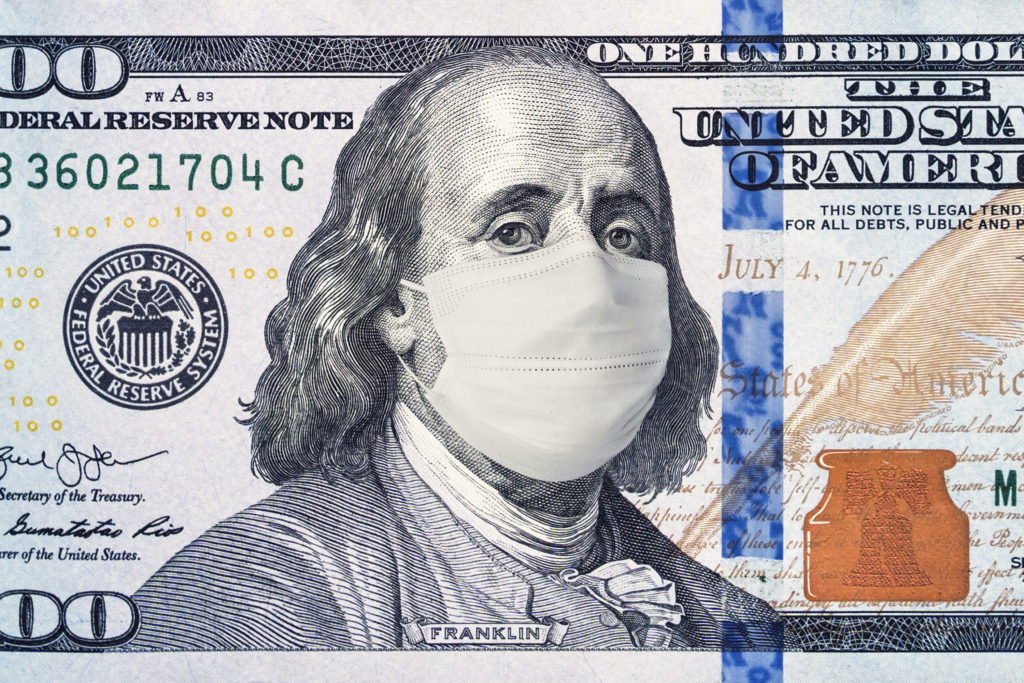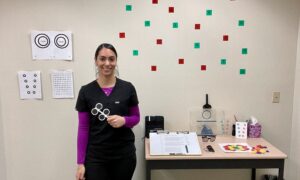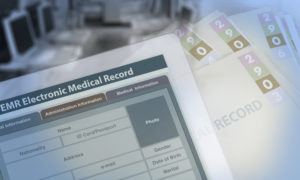
By Mark Wright, OD, Professional Editor, Review of Optometric Business
Bob Schultz, CEO, Vision One Credit Union
March 25, 2020
If the pandemic has not impacted your practice yet, it’s just a matter of time until it does. One of your goals in a time of decreased revenue collected is to downsize expenses to avoid going negative on your practice cash flow. This spreadsheet is designed to help you achieve that goal.
This article will show you how to use the spreadsheet to guide your practice not only in these difficult times but also as we climb back out of this problem.
There are four pieces of background information important for you to know.
Interactive Spreadsheet
First, if the spreadsheet opens in “Protected View” as indicated on a ribbon near the top of the spreadsheet, click on the “Enable Editing” button on the ribbon to make the spreadsheet interactive. If not opened in a “Protective View,” then no ribbon will display and the spreadsheet is already interactive.
Second, the numbers in the spreadsheet as you open it are annualized, however, you can adjust the spreadsheet for any time frame you want. We suggest to, compare apples to apples, that you should put the first three months of last year into columns B and C, so that you can compare that to the first three months of this year, or compare to a revenue number adjusted down for current patient volume (see the note below).
Third, we’ve simplified the spreadsheet so it will be easier for you to use. For example, Revenue (collected) is your total revenue collected from all sources. As an example, we did not separate out third-party revenue from self-pay revenue. This should make it easier for you to enter numbers quickly.
Fourth, anytime you see a red number, you can change that number. Percentage entries in red will change dollars in the spreadsheet. See the step-by-step instructions in the next section below.
What the Practice Did Last Year (labeled “Normal” in the spreadsheet)
RED NUMBERS IN COLUMN B
The red numbers in column B are the average percentages your practice should hit in order to have a healthy practice. If your practice percentages are different than the numbers in red, then put your actual practice percentages into the spreadsheet in column B where there are red numbers.
RED NUMBERS IN COLUMN C
There are just two red numbers in column C. The first is Revenue (collected) and the second is Debt payments. Revenue (collected) is a number that should be easily accessible. The same is true with Debt payments that you are making for loans and leases.
What the Practice Did this Year – No Reduction in Expenses (labeled “Reduced Revenues, No Cost Reduction” in the spreadsheet)
If the practice has taken no attempt at reducing expenses even though revenue (collected) is lower, then the practice cash flow is at risk. Column E is going to show what happens when there is no reduction in expenses.
Other Articles to Explore
If in the first three months of this year, your practice is experiencing reduced revenue, then put that number into column E. The spreadsheet will automatically calculate your practice numbers with the assumption that you have made no attempt at expense reduction. The odds are high that you will end with a negative practice cash flow (column E, line 29).
But that’s not our goal. Our goal is to downsize expenses to avoid going negative on the practice cash flow.
Note: Remember that revenue (collected) today includes third-party payments from exams and materials you did 1-2 months ago, therefore, your revenue (collected) is artificially higher and does not accurately reflect your true revenue collected for the work you did this month. Since this pandemic is going to get worse before it gets better, you can also use this spreadsheet to predict more accurately what is going on in your practice. For example, if your patient flow (e.g.: the number of full exams) is down this week by 30 percent, then enter into column E 70% of your normal collected revenue from column C.
What the Practice Did this Year – With a Reduction in Expenses (labeled “Reduced Revenues, Managed Cost Reduction” in the spreadsheet)
Column G shows the expense targets that you are trying to hit in order to keep a positive practice cash flow. Think of the money in column G as the amount you have available to purchase those services. The example in the spreadsheet, populated for a $1 million revenue practice, indicates for last year you had $220,000 to buy your non-doctor staff (column C, line 17). This year, with reduced revenue and the goal of avoiding going negative on the practice cash flow, you only have $154,000 to buy your non-doctor staff (column G, line 17).
You have a couple of choices to make this happen. You could lay off two full-time employees or you could reduce all staff schedules to achieve the same dollar end result. You would need to consider practice patient flow and work necessary in order to make the correct decision. Check with your HR attorney in order to understand the unemployment compensation rules for your state. For example, some states will cover the reduction in staff schedules under unemployment coverage, others may not.
You must take action on the dollar amounts in column G in order to keep your practice healthy. It’s not enough just to recognize the numbers, you must reduce expenses to either hit that number or be under that number.
In addition to the payroll adjustment, another strong suggestion in the spreadsheet is to ask your lenders for either a temporary interest-only payment or for a payment deferral. Closer to zero you can get this number (column G, line 27) the more help this gives you to achieve your goal of downsizing cash outflows to avoid going negative on practice cash flow.
FUTURE
This spreadsheet is not only helpful in bringing you through the financial challenges of this pandemic, but it will also be helpful as you come out on the other side of this to get your practice back to normal as quickly as possible. Continue to use this spreadsheet to closely monitor your numbers, making sure that your practice is moving positively out of this crisis and back into normal numbers.
Mark Wright, OD, is ROB professional editor and CEO of Practice Management Center. To contact him: mwright@pathways-o.com
Robert Schultz is the CEO of Vision One Credit Union. To contact: BSchultz@visionone.org




























